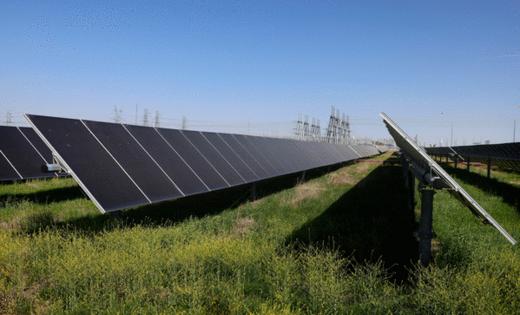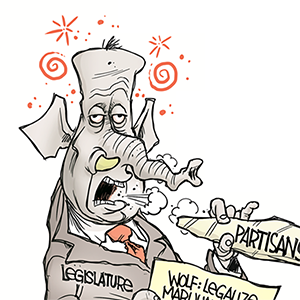Commentary: Let the market decide -- The wisdom of ending wind and solar subsidies
Published in Op Eds
The recently passed One Big Beautiful Bill Act signals a major shift in federal energy policy. Among its provisions, the law accelerates the phase-out of tax credits for new wind and solar projects and eliminates long-term subsidies for renewable developers on public land.
The law revives a principle that should guide all energy policy: Let the best ideas win on their own merit.
Rolling back the subsidies should relieve pressure to use valuable land for solar and wind farms. Consider the direct land use involved in today’s energy sector. Wind projects take up approximately 30,000 acres to produce the same amount of electricity as a 2,500-acre coal plant. Solar is also land-intensive, requiring about 5,000 acres for equivalent output.
However, when government subsidies reduce the use of public land for renewable energy sources, investors are no longer incentivized to look at the tradeoffs of their land-use footprint.
Land is a finite and valuable resource. Using it for energy comes at the expense of other potential uses. When developers receive subsidies, they do not have to account for the value of alternative uses for the land. If an energy source requires more land, it should pay for that land.
Communities across the country are voicing concerns, objecting to large-scale wind and solar developments that disrupt local land use, strain water resources, and alter rural landscapes. According to Robert Bryce’s Renewable Rejection Database, more than 800 wind and solar projects have been rejected or restricted by local governments in the United States since 2015.
One example of the disadvantages of large-scale renewable energy projects is the Spotsylvania Solar Energy Center in Virginia, a solar facility that spans over 6,300 acres, one of the largest solar projects east of the Rockies.
Locals raised their concerns over the project’s environmental effects, particularly the clearing of 3,500 acres of forested land, which involved the removal of around a million trees. Residents feared toxic substances leaching from panels into groundwater, in addition to the heat generated by the installation of 1.8 million solar panels, manufactured by Chinese companies.
Despite the opposition, full operation began in 2021. Virginians’ average electricity rates rose from 10 cents per kilowatt hour (kWh) in 2019 to 15 cents/kWh in June 2025. This 50% rise in energy prices over less than 6 years underscores that wind and solar projects generally don’t save money and entail serious environmental and community costs of their own.
Supporters of climate-change subsidies often argue that a rapid shift to renewable energy is necessary as they believe resource depletion or environmental harm is on the horizon. Even though America still holds centuries’ worth of recoverable fossil fuels, this argument is flawed in its understanding of energy production.
Coal, oil, and gas are the most efficient and profitable energy sources available. Over the past 20 years, wind and solar have received global subsidies of $9 trillion.
The most recent data from the Energy Information Administration show that renewable energy sources received over $15 billion in federal subsidies in 2024, compared to $3 billion for fossil fuels. If renewable energy is truly the cheapest and most competitive option, why do its supporters call for lavish government support?
Some argue that without such incentives, renewable energy investment will dry up. However, when the government gives special financial help to one type of energy, it makes it harder to see which energy sources are the best and most affordable. This distorts fair competition. If wind and solar energy are the future of America’s energy sector, they should compete without the crutch of federal aid.
Subsidizing large-scale land for renewable energy development raises electricity prices and uses public, taxpayer-owned lands. The result is not cleaner and more reliable energy, but misallocated resources.
Spain offers a cautionary tale. With over half of its grid supplied by renewables and a national push toward 100% by 2050, the country suffered a 12-hour blackout on April 28. Two solar panels in southwest Spain went down, and the grid had insufficient inertia, or backup, to continue operating.
The One Big Beautiful Bill Act represents more than just a shift in federal spending; it reflects a renewed commitment to competitive land use in America’s energy sector. By phasing out preferential tax treatment and below-market land deals, the law encourages energy developers to compete on merits and meet America’s rising energy demands with an approach rooted in efficiency, reliability, and competition.
_____
Diana Furchtgott-Roth is director of the Center for Energy, Climate, and Environment at The Heritage Foundation, where Ryan Strasser is a member of the Young Leaders Program.
_____
©2025 Tribune Content Agency, LLC.

























































Comments